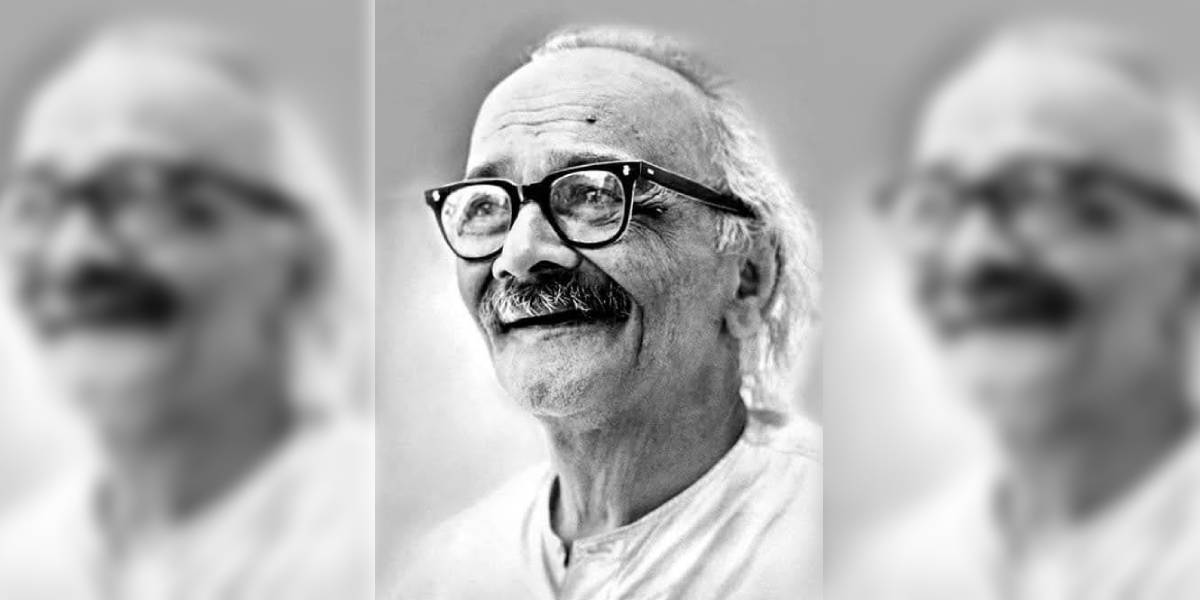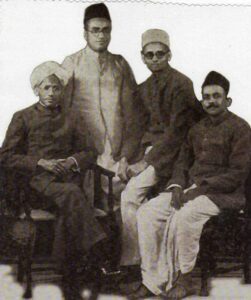Today is the birth anniversary of the celebrated Kannada poet. What does he mean when he says that the song, the bhaavageeta, is without meaning or purpose?

Celebrated Kannada poet DR Bendre (Supplied)
Where is the song born? Ambikatanayadatta (the Kannada poet and Jnanpith awardee, Dattatreya Ramachandra Bendre, 31 January 1896 – 26 October 1981) reflects on this pivotal question of poetry in his poem Bhaavageeta.
As a poet, Da Ra Bendre (DR Bendre) considered himself a sadhaka of poetry or language in its most workly form.
A true sadhaka aspires to realise the most essential aspect of what one is seeking. The many stories of sadhakas talk about how the contingent, the apparent, and the simulated must be left behind, and the essential and the primal must be reached.
In tracing the song’s essence, we first encounter speech, language in its most ordinary form. The song, as a form, in a way, comes after speech. But seen in another way, the song is speech in its most elemental form.
Our everyday speech is made up of meanings to be conveyed and purposes to be fulfilled. The poet DR Bendre says the song, the bhaavageeta, is without meaning or purpose (arthavilla, svaarthavilla, bariya bhaavageeta).
Songs indeed have meanings and purposes, but they are meanings and purposes subsumed into the form of the song itself and not directed at the world like ordinary speech.
When I speak, I ask you to attend to things beyond my talk. But when I sing, I ask you to attend to the song itself. Song may come in the wake of speech but is, in essence, prior to speech.
While meanings and purposes are how speech is put to use in our everyday life, that is itself not the essence of speech either. Its essence lies somewhere deeper.
Speech is ordered sounds. Each language has its palette of sounds (‘phonemes’). But even beyond that, the human capacity for language, any language, depends on our ability to isolate and construct a set of sounds away from a cacophony of noises.
These sounds are unique because they are phonal and full of tone variations. Their pristine token is the singularly melodious sound of the conch, the Omkara.
The song is a step shy of this pristine sound, says Bendre, because it comes in the wake of the Omkara, after this singular sound has descended and taken on an earthly form of notational distinctions and words.

Masti Venkatesha Iyengar, K Gopalakrishna Rao, PT Narasimhachar, and DR Bendre, Kannada writers and poets (Supplied)
But how was speech discovered from such phonal sounds?
The first intimations of speech probably lay in birdsong, or in Bendre’s words, in the bee’s buzz (bhrunga). Speech came to be when the sound (naada), the phonal aspect, was seen together with rhythm (kaala or laya), the temporal aspect.
The meshing together of the phonal and the temporal is itself syntax. Birdsong, says the polymath Sanskritist, Frits Staal, could be a possible source of syntax. It is the simplest instance of sound and rhythm deliberately put together.
Similarly, a striking example of human syntax is the mantra or the chant. But syntax here is not what linguists mean by it: It refers not merely to meaningful word order but, more generally, to a general experience of order itself.
Birdsong, and after it, mantras, are the early experience of syntax in the sense that they are the early experience of phonal and temporal order.
The song is the high watershed of this achievement. Meanings and purposes could exist and be expressed only after some semblance of phonal and temporal order can be experienced.
Mantra, says Staal, should have preceded ordinary language logically, if not temporally. Similarly, the song is prior to speech logically, if not temporally.
The phonal sound speaks to our deepest human need.
Even if we want to, we cannot attend to the noises we hear. At the most, we turn towards its source to assess either the extent of danger or inconvenience it may cause or the comfort and joy it may give us, for instance, in the case of the sweet laughter of children and the purring of cats.
But the speaking of sentences, the chanting of mantras, and the singing of songs beseech us to attend to the sounds themselves amidst the prevailing buzz of noises.
Probably, phonic sounds are of a kind simply because they can be attended to. Without the sound of speech and song calling him, man is lost in the wilderness of the world despite having eyes to see and limbs to walk. The beseeching voice is the compass that orients us in the world.
Meaningful activity is possible because of language.
Desires can be articulated, beauty can be appreciated, and tragedies can be experienced because we have ways of presenting them to ourselves in language.
The song, as the primal experience of sound and language, is also where our life’s joys and sorrows are embodied. But even more important, the song is the condition of possibility of life’s joys and sorrows.
Because of what a song is, it can also convey joys and sorrows. It is not serendipity that the same being who can articulate joys and sorrows is also the being who sings.
And finally, the song is bound to our own temporality.
The Omkara is the undying perennial sound, which refers to all and any phonal sound. The song, a step shy of the Omkara, is a particular arrangement of sounds and shall end.
The Ananta Kaala, the eternal watcher of the years, inquires, “until where has it come?”
The song stops, and the sounds dissolve back into the Omkara. But in the moments in between, we get a glimpse of the joy of the song because it puts us in touch with our most unencumbered, most pristine, most non-contingent, and purposeless selves; because the song was the herald of the most unencumbered, most pristine, most non-contingent, and most purposeless sound, primal and eternal.
(AP Ashwin Kumar is an associate professor at Ahmedabad University, working in the area of philosophy of culture. His book ‘Nationalism, Language, and Identity in India: Measures of Community’ is published by Routledge. He also writes in Kannada)
(In the first paragraph, there is a link to a section in the Wikipedia article on DR Bendre. This section in the article, on Ambikatanayadatta, was written by Madhav Ajjampur, who has translated selected poems by DR Bendre from Kannada into English recently)

Jun 08, 2023

Jun 06, 2023

Jun 04, 2023

Jun 01, 2023

May 23, 2023